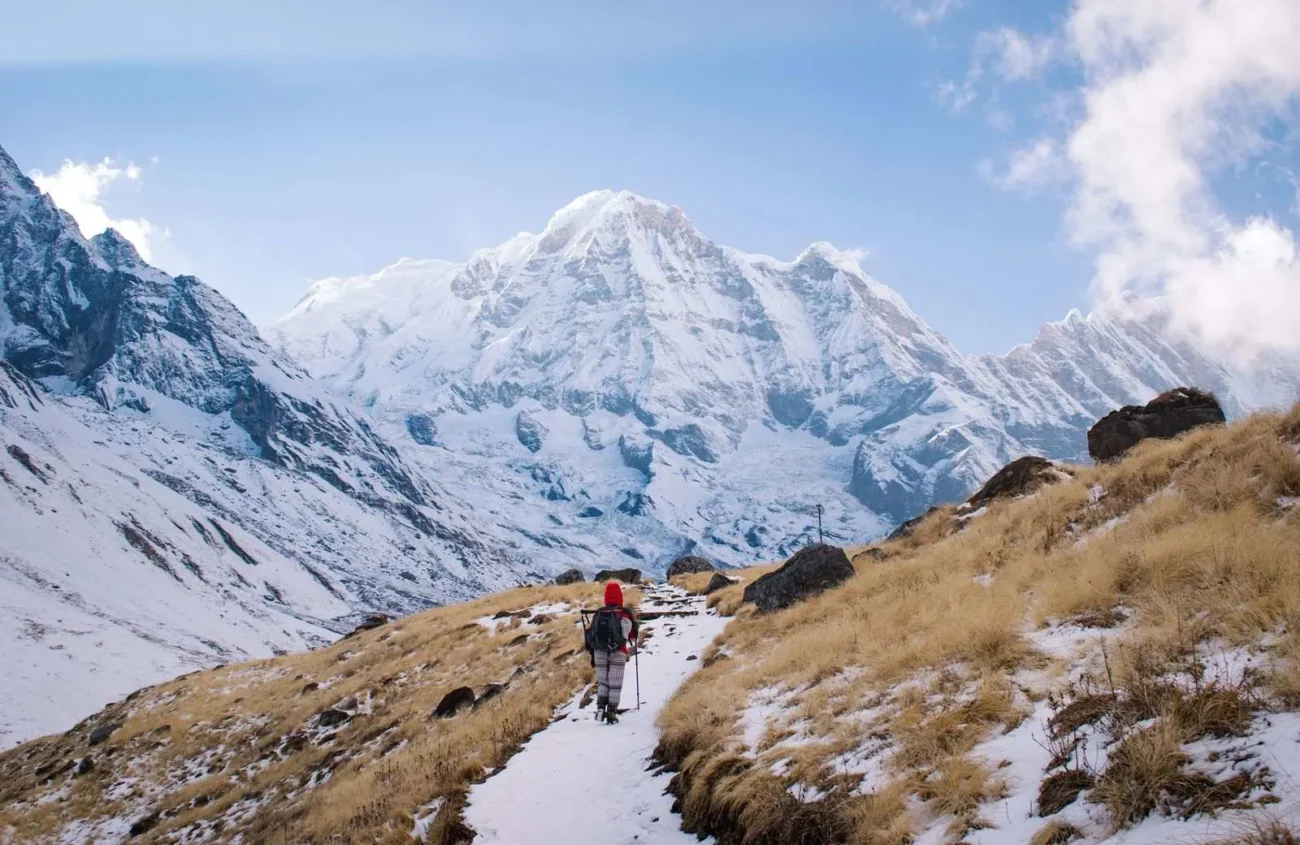
The Annapurna Base Camp trek takes you on an unforgettable journey through the heart of Nepal’s Annapurna region, offering breathtaking views of the Himalayas and a glimpse into the region’s rich culture.
Annapurna Base Camp trek offers a diverse journey through lush forests, challenging mountains, and a variety of wildlife.
The trek offers the mesmerizing sight of vibrant Rhodoavandendron blooms, encounters with exotic wildlife, and the melodious calls of countless bird species.
However, the allure of this destination comes with a crucial consideration—Nepal’s mountainous terrain is notorious for its unpredictable nature, with weather conditions changing rapidly.
Trekking the Annapurna Base Camp (ABC) trail is an adventure that requires careful planning, especially when it comes to timing your trek.
The timing of your expedition plays a crucial role in shaping your adventure. While the trek can be done year-round, choosing the right season ensures a safe and enjoyable experience.
To fully immerse yourself in the grandeur of the excursion, choosing the right season is essential. By understanding the seasons’ distinct characteristics, you can optimize your experience and maximize the journey’s awe-inspiring beauty.
Nepal experiences four distinct seasons: Spring (March/April/May/June), Summer/Monsoon (July/August through Mid-September), Autumn (End of September/October/November), and Winter (December/January/February).
Let’s dive into these seasons and choose when to trek Annapurna:
Spring Season (March/April/May/June):
The ideal time for the Annapurna trek is during the Spring Season (March/April/May/June) when the weather in the Annapurna region is exceptionally favorable.
The days are pleasantly warm, providing trekkers with the opportunity to relish the stunning landscapes without the discomfort of extreme cold.
However, it’s important to be prepared for chilly nights, as temperatures can drop as low as -8 degrees Celsius.
One of the captivating features of trekking in spring is the enchanting transformation of the landscape. Lush green forests come alive, and the trail is adorned with vibrant rhododendron and magnolia blooms, creating a visual feast for trekkers.
This season offers a sensory journey through nature, making the trek not just a physical challenge but also a delightful exploration of the surroundings.
The temperature during spring is moderate, striking a balance that is neither too hot nor too cold, ensuring stable weather conditions with relatively low precipitation.
However, it’s worth noting that the trail can become quite crowded, so it’s advisable to plan accordingly and secure accommodation in advance.
 Summer/Monsoon season (July/August through Mid-September):
Summer/Monsoon season (July/August through Mid-September):
During the Summer/Monsoon season (July/August through Mid-September), the Annapurna Region experiences a significant change in weather due to the convergence of the monsoon and summer seasons.
Daytime temperatures typically range between 20 to 25 degrees Celsius, creating a pleasantly warm environment for trekking.
However, nights can become chilly, with temperatures dropping to negative 1-2 degrees Celsius, necessitating preparation for colder conditions.
This season presents a unique set of challenges, particularly with the presence of leeches that thrive in the humid and wet conditions. Trekkers must be vigilant and take necessary precautions to prevent leech bites.
To counteract leeches and navigate the unpredictable weather, it is recommended to pack full-length clothes, anti-slippery boots, high-quality rain jackets and pants, and waterproof clothing, as rain can be intense and frequent.
Carrying a hat with a wide brim serves a dual purpose by offering protection from both the sun’s relentless rays and the rain, ensuring a dry and comfortable trek.
The monsoon season may lead to landslides along certain parts of the ABC trekking routes, potentially disrupting travel plans.
Trekkers need to exhibit flexibility and adaptability in response to these challenges. Despite being an off-season period, the trails of Annapurna are less crowded, making it perfect for individuals who value tranquility and solitude.
It’s crucial to be aware of potential flight delays and cancellations during the monsoon season in Nepal, prompting the advisable inclusion of buffer time in travel plans to accommodate potential disruptions.
 Autumn Season (End of September/October/November):
Autumn Season (End of September/October/November):
The Autumn Season (End of September/October/November) marks the prime time to embark on the iconic journey to Annapurna.
Autumn season represents the pre-winter season in Nepal, offering the most favorable weather conditions for trekking.
With moderate temperatures, the days are pleasantly warm, while the mornings and evenings provide a cool ambiance, creating an ideal setting for outdoor adventures.
The weather is remarkably clear and precise, ensuring a clean and crisp atmosphere that grants trekkers unparalleled visibility to fully immerse themselves in the breathtaking vistas of the Annapurna range.
As you traverse the trails of ABC, you are greeted by delightful fragrances from numerous blooming flowers.
However, it’s advisable to be prepared for chillier nights, as temperatures can drop to an average of negative 3-4 degrees Celsius.
Autumn is also the harvest season, and as the trails wind through terraced fields and rural landscapes, trekkers can observe the agricultural practices and rural way of life of the local communities in Nepal.
Furthermore, the autumn months coincide with the significant Nepalese festivals of Dashain and Tihar, adding a vibrant cultural atmosphere to the journey.
The Autumn Season offers an ideal combination of perfect weather conditions, stunning vistas, and a lively cultural ambiance. Crisp, clear skies, comfortable temperatures, and the fragrant bloom of flowers make this journey unforgettable for trekkers.
The lively trail interactions provide ample opportunities for cultural exchange and the chance to make new friends along the way.
 Can we trek to ABC during Winter Season (December/January/February):
Can we trek to ABC during Winter Season (December/January/February):
Trekking to Annapurna during the Winter Season (December/January/February) is indeed possible with thorough preparations and appropriate equipment. However, it is discouraged without proper prep.
The trek to Annapurna during winter season is adventurous and challenging, attracting those who seek to conquer the iconic trail amidst extreme weather conditions and a stark, snow-covered landscape.
The winter season sees very few trekkers, and the temperatures in the Annapurna region are unforgiving. Daytime readings range from a bone-chilling 0 to 5 degrees Celsius, plummeting to a frigid negative 10-15 degrees Celsius at night.
There is also a heightened risk of avalanches, making it difficult and potentially dangerous for hikers.
Despite the formidable challenges, the winter season unveils a unique and ethereal beauty along the trail. To brave the harsh conditions, trekkers will need heavier clothing, including warm woolen coats for insulation against the biting cold.
Staying hydrated becomes crucial to ensure the body functions properly in the cold, and caution is a must to prevent slipping and avoid significant injuries.
Trekking to Mount Annapurna during the winter season is not for the faint of heart. It presents an adventurous and demanding journey that should only be undertaken by experienced trekkers who are well-prepared for the extreme weather conditions and potential hazards inherent in the terrain.
What is the best time to do Annapurna trek?
The best time for Annapurna trek is during the Spring (March, April, May, June) and Autumn (end of September, October, November) seasons.
In Spring, trekkers can relish clear skies, comfortable temperatures, and the vibrant blooming of rhododendrons.
Autumn, on the other hand, provides stable weather, clear views, and pleasant temperatures.
Both seasons offer the most favorable and fine conditions for ABC trekking.
Ultimately, determining the best time for your Annapurna journey depends on your personal interests, level of experience, and your readiness to embrace the unique attributes of each season.

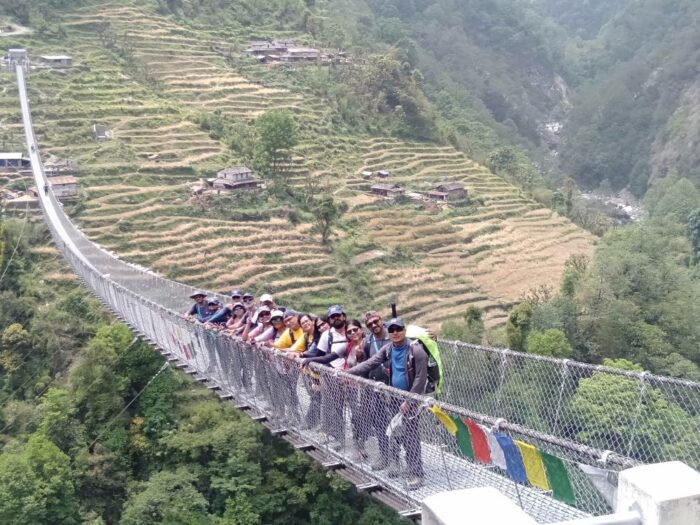
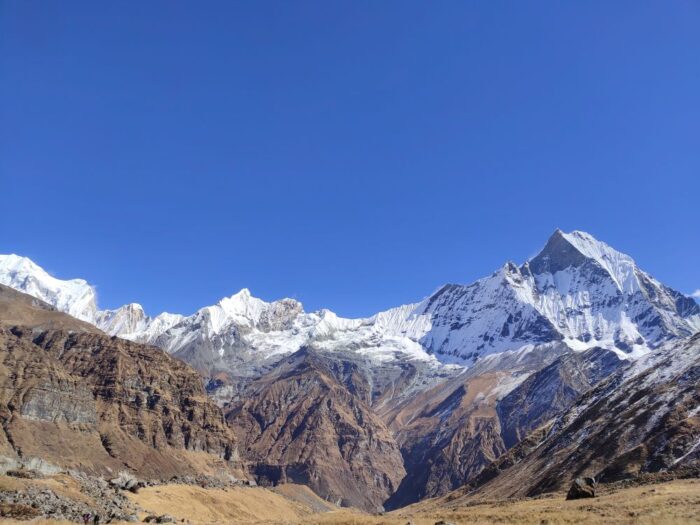 Summer/Monsoon season (July/August through Mid-September):
Summer/Monsoon season (July/August through Mid-September):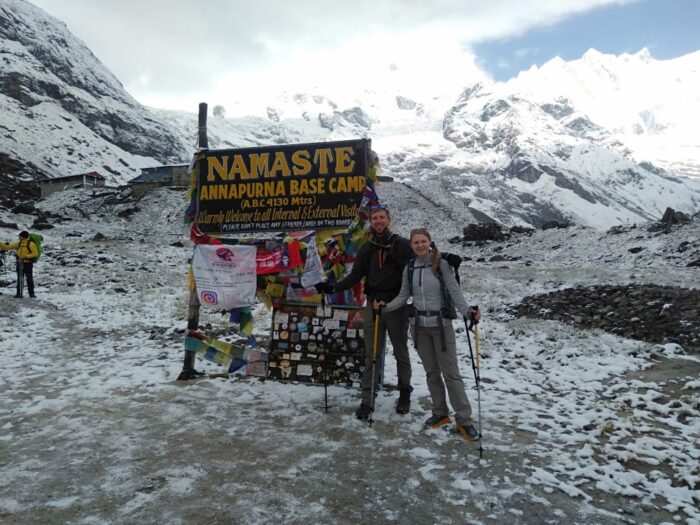 Autumn Season (End of September/October/November):
Autumn Season (End of September/October/November):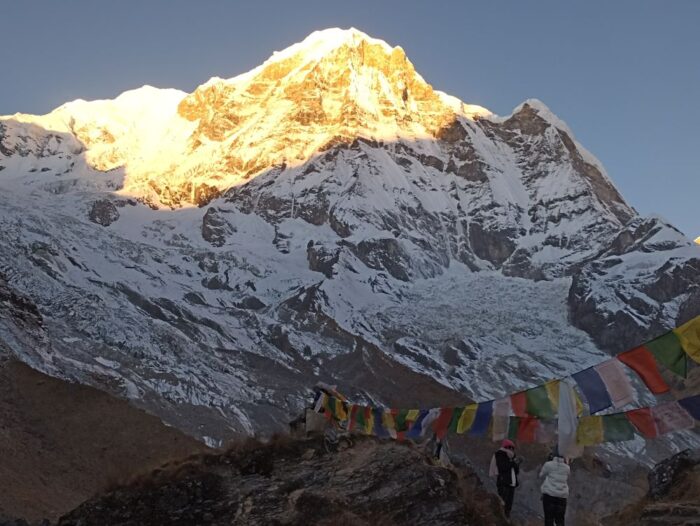 Can we trek to ABC during Winter Season (December/January/February):
Can we trek to ABC during Winter Season (December/January/February):




